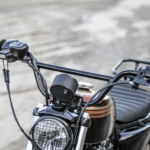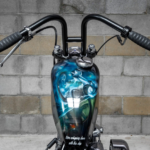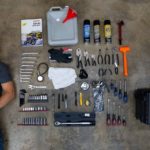For most people, motorcycles are not a necessity, they see them as a luxury. But for me, it’s a must-have in my life, and since you’re reading this article, it’s probably for you as well. So when you’re limited on money, buying a motorcycle at any price range is an investment that should be taken seriously. I know I probably can’t afford multiple motorcycles, and you probably can’t too, so I wanted to make sure the one I got was really worthy my money.
So in order to keep my motorcycle in a good condition, without spending too much money, frequent maintenance and repairs are necessary. You also might need to replace a part or two, most frequently the tires, among other things. So it’s important to have the knowledge and understand a few terms and how they can affect the performance of your bike.
Most retailers that sell motorcycle parts refer to them as OEM (original equipment manufacturer) parts. What this means is that the parts are made by the same manufacturer that made the bike, which they are intended for. A simple example – OEM Yamaha parts are made by Yamaha. Purchasing OEM parts means that you’ll be buying an exact replacement for the part that needs replacing.
OEM labeled parts are those that have not been previously used. The advantages of purchasing them is that they are guaranteed to be the perfect fit your your bike. They’re most reliable and tend to last longer than most other options. However, it’s important to keep in mind that they are the most expensive option out of all the rest.
Unlike OEM parts which are made by the original manufacturer or an authorized supplier, aftermarket motorcycle parts are made by third party companies. The nature of the aftermarket parts is – the third party is not connected in any way with the manufacturer of the bike, but it uses the manufacturer’s specs to make parts that will fit the bikes made by that specific company.
Because of the many different companies that manufacture aftermarket parts, it’s difficult to properly assess all of them. Some may be genuinely cost effective because they’re more durable and less expensive, so before buying any aftermarket parts, it’s a great idea to research the brand. Often times the cheapest options will also wear-out quickly. Other times, a brand produces parts of equal quality as an OEM manufacturer.
All in all, you have to assess the advantages and disadvantages of both aftermarket and OEM parts and decide which one you should buy. If budget is not a problem, OEM are always the safest choice. If you end up buying aftermarket parts, at least make sure they are from a reputable brand. Avoid used parts at all costs, unless you are getting them from a close friend or a mechanic you know and trust.

















